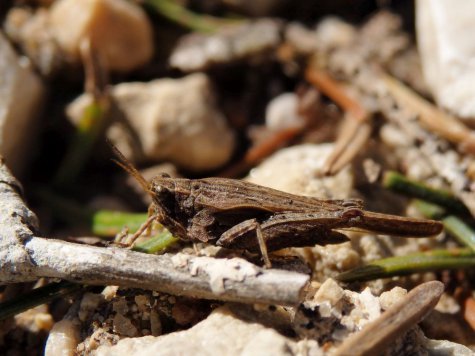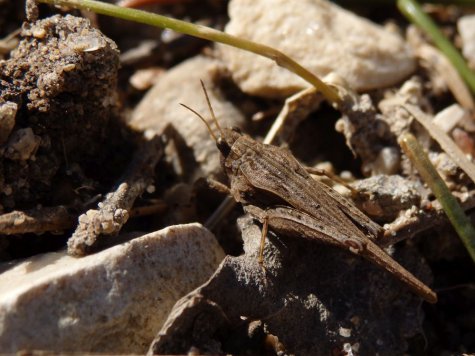Groundhoppers are spring heralds
Text and photo Ave Liivamägi
Translation Liis
The pronotum of the slender groundhopper has an almost straight upper edge and extends past the abdomen
Slender groundhopper Ahassirts Tetrix subulata
Before all greenery grows up in spring we may see small insects reminding of grasshoppers in action on the ground. They are groundhoppers or miniature locusts.
Similar to grasshoppers the groundhoppers have short antennae. In contrast to grasshoppers however groundhoppers have a long pronotum - first segment of the thorax - which completely covers the abdomen or even reaches beyond it. In addition groundhoppers have regressed forewings.
Groundhoppers are brown or grey in different shades. Depending on the species the body is 8-16 mm long. They have jumping legs and reasonably well developed hind wings, allowing them to move by jumping as well as flying.
Groundhoppers feed on algae, lichens, moss and grasses. As habitat they prefer either moist or dry open areas. They can for instance be found on the banks of lakes, rivers, creeks and ditches, humid meadows, bogs and forest verges.
In contrast to most male Orthoptera such as grasshoppers, who create a sound to attract the females male groundhoppers do not chirp. The sexes socialize by their movements.
In Estonia groundhoppers are probably represented by 4 species. The most common species is the slender groundhopper (Tetrix subulata).
Groundhoppers leave their wintering places (in moss and lichen) on the first warm spring days










